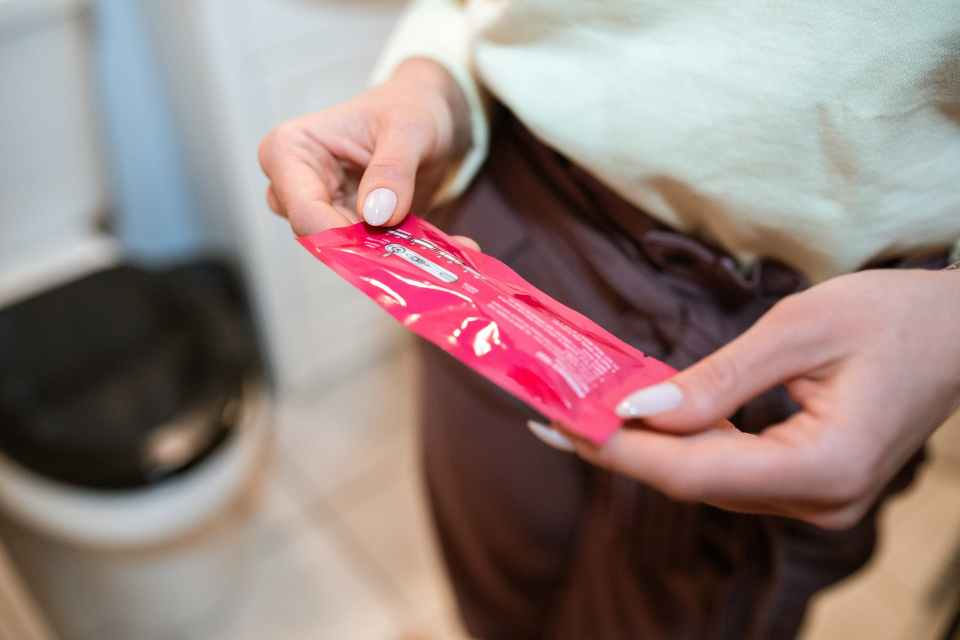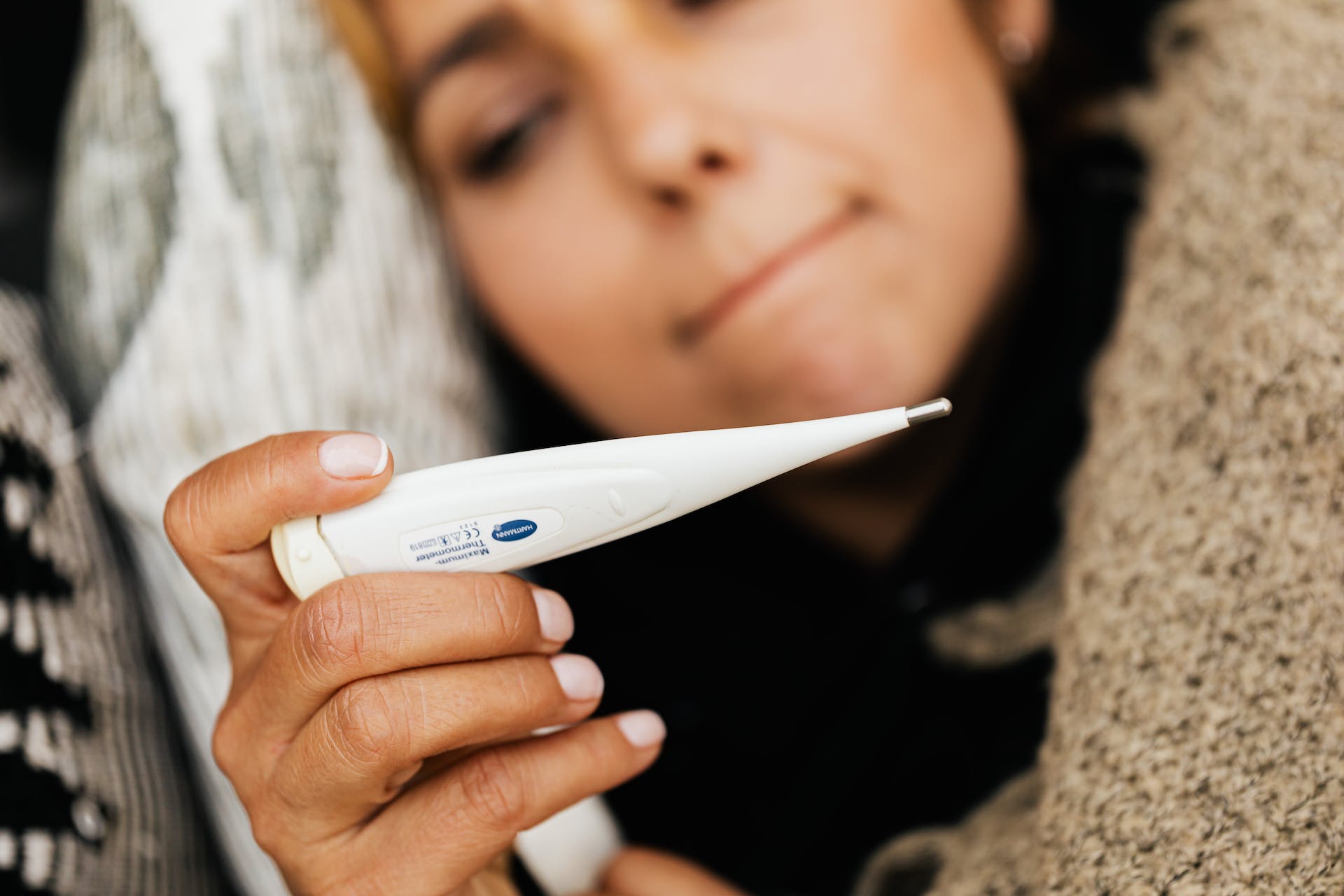Whether you are actively trying to conceive or using a natural form of birth control to actively not get pregnant, knowing the signs of ovulation and recognizing when ovulation is over is key to success. So I tapped into an expert, Dr. Nicole Tod of North Texas Women's Healthcare, to walk us through the subtle (and not so subtle) signs that your cycle is complete.
This is really what they should be teaching in sex ed! By recognizing the signs that ovulation is over, such as changes in cervical mucus consistency to shifts in libido, you can plan your approach to conceiving, understand your body, and navigate the often-confusing world of fertility. Of course, this is just a resource and every body is unique, so please consult with a healthcare provider if you have any concerns.
Understanding Ovulation and Ovulation Cycle
What is Ovulation and How Does it Work?
Ovulation, in simple terms, is the release of a mature egg from one of your ovaries during your menstrual cycle. This process begins when your brain releases a hormone called LH (luteinizing hormone). The LH surge, as it's commonly known, triggers the most mature follicle in one of your ovaries to release an egg in preparation for the implantation of a fertilized egg. The Follicular Stimulating Hormone (FSH) hormone encourages the ovaries to develop follicles that have an egg in each of them. Typically there will be a dominant follicle that will mature. During this maturation, estrogen levels increase, which start to build the uterine lining to prepare for the implantation of a fertilized egg. At the end of the follicular phase, when estrogen is highest, ovulation occurs and the mature egg is released.
Average Duration of a Cycle
An average cycle typically lasts about 28 days, but it can vary from woman to woman. So you may have to do a bit of detective work to figure out your cycle length. Day one of your cycle is the first day of your period, and ovulation usually occurs in the middle of the cycle.
Signs You’re Ovulating
You might notice a change in the position or firmness of your cervix, slight twinges or lower abdominal pain (often known as ‘mittelschmerz' or ‘middle pain'), changes in the consistency and color of your cervical mucus (it often resembles egg whites during ovulation), or an increase in your libido.
How Do I Know Ovulation is Over? Signs Your Cycle is Complete
Changes in Cervical Mucus
One of the most noticeable signs is a change in your cervical mucus. If you pay attention, you’ll notice that the consistency of your cervical mucus changes dramatically throughout your cycle. During ovulation, it will be thin, clear, and slippery to provide a better environment for sperm. It’ll closely resemble the texture of egg whites, which is why it’s sometimes called “egg white discharge.” I highly recommend using these thong panty liners to manage these changes in cervical mucus. Once your cycle is over, your cervical mucus will typically become thicker and less transparent, more like a creamy lotion. You might even notice less of it. This is due to the hormonal changes of progesterone, which takes over after ovulation. When a woman is about to ovulate, the cervical position will be higher in the vagina, it will become softer, more open and moist to facilitate the entrance of sperm.
Basal Body Temperature (BBT) Shifts
Your Basal Body Temperature (BBT) is another sign. Post-ovulation, you'll typically see a slight but sustained temperature spike, thanks to progesterone again. Investing in a good thermometer might not be a bad idea. You can select a cheaper thermometer and document your temperatures in a fertility app like Glow, or you can purchase a smart thermometer that syncs with an app.
Reduction in Libido
Once the fertile window closes, it's natural to experience a decrease in libido. This diminishing sex drive is a normal part of the cycle. Don't fret, it's just your body's way of telling you that the ovulation phase is over.
Breast Tenderness
Last but not least, some women experience breast sensitivity after ovulation, another effect from the hormone progesterone.

What Happens After Ovulation is Over?
You've been diligent about tracking your signs and symptoms, and you're fairly confident you've recognized the signs ovulation is over. But what happens next?
Post-Ovulation: The Luteal Phase
After ovulation, your body enters the luteal phase, which is characterized by a rise in the hormone levels of progesterone. “These are all just signs that the hormones are changing, progesterone is rising,” Dr. Nicole Tod explains. This phase prepares your body for a potential pregnancy.
You might notice a slight uptick in your basal body temperature, a decrease in cervical mucus, and maybe even a mild twinge of lower abdominal discomfort known as mittelschmerz. These changes are your body's way of signaling the shift in hormones.
Did You Ovulate This Cycle?
But what if you didn't ovulate during this cycle? How would you know? Irregular periods can be a clue, as can uncharacteristic changes (or lack thereof) in your cervical mucus or BBT.
“The best way to see if you ovulated is with a progesterone test,” Dr. Tod suggests. This test can be done through urine at home or by visiting your doctor for a ‘day 21 progesterone' test. If the results show progesterone levels below a certain number, it's likely you didn't ovulate.
But remember, our bodies aren't machines, and an occasional missed period can be a normal part of your menstrual rhythm.
Can You Still Get Pregnant if You Don’t Ovulate?
“So, if I don't ovulate, I can't get pregnant, right?” Well, yes. “You have to ovulate because that's the release of the egg. If you don't ovulate, you don't release an egg, and you cannot get pregnant,” Dr. Tod confirms.
The Importance of Tracking Ovulation for Pregnancy
Why is it crucial to keep a tab on your cycle if you're trying to conceive? Knowing when you've ovulated helps you identify your fertile window, the prime time for successful fertilization. When you're trying to conceive, understanding your body and its changes can be a game-changer.
Fertility Window and Ovulation
You've probably come across the term “fertility window” in various apps and articles. But what does it mean? “When they're saying fertility window, what that means is that these apps are taking a mathematical calculation based off of the information that you've put into it to say these are the days that you probably are likely to ovulate,” explains Dr. Nicole Tod.
However, the “true” fertility window is actually a lot narrower. “Once the egg is actually released, it only lives for about 12 to 24 hours. And that is the true fertility window,” adds Dr. Tod. This is the prime time for successful fertilization and when timed intercourse can significantly increase your chances of becoming pregnant.
Timing Intercourse for Optimal Fertility
“The best time to have sex during ovulation to get pregnant is that 12 to 24 hour period after it's released,” says Dr. Tod. However, she also emphasizes that it's not necessary to live by ovulation calculators when trying to conceive.
It can indeed get stressful for many people to time intercourse perfectly. Dr. Tod suggests a more relaxed approach: “If you're able to just have sex 2 to 3 times a week, you're likely going to catch that ovulation window.”
Why is this approach effective? Because sperm can live in the female reproductive tract for about five days. “It's a good idea to have intercourse the few days before you think you might be ovulating because then there's actually sperm waiting in the reproductive tract for when the egg gets there,” Dr. Tod explains.
While knowing when you've ovulated helps you identify your fertile days, remember not to get too stressed about timing everything perfectly. If you are an extreme planner like me, and are trying to understand your fertility cycle, I used these ovulation tests when I was TTC for both my pregnancies and found comfort knowing exactly when ovulation occurred.
Most of all, try to enjoy the process and trust your body.
Preparing for the Next Ovulation Cycle: A Friendly Guide
Here is a quick summary of the tools we’ve covered so far you can lean on to understand your ovulation cycle. Knowledge is power, especially when it comes to understanding your menstrual cycle. Here's what you need to know:
- Ovulation Predictor Kits (OPKs): These handy devices detect the surge in luteinizing hormone (LH) levels, indicating that ovulation is about to occur.
- Body Basal Temperature (BBT): Tracking your BBT can provide insightful information. A slight increase in BBT is typically seen after ovulation due to the dominance of progesterone. Just remember not to hit the snooze button too many times – you need to measure your BBT first thing in the morning!
- Cervical Changes: Watch out for changes in cervical mucus, position, and feel. A clear sign of ovulation is that the cervical mucus resembles egg whites, and the cervix softens, opens, and lifts up.
Our expert Dr. Tod agrees: “Once it has gone, you've got to wait for a new cycle to get another egg,” she says. But don't fret – there are resources to help you along the way. You can use apps, journals, or even your phone calendar to monitor your ovulation symptoms.
“I encourage all my patients [to] start tracking your cycles,” Dr. Tod suggests. “Just as simple as getting a calendar and, and tracking your periods is a good place to start.”
Remember, it's okay if your cycle isn't textbook perfect. “21 to 35 days is considered normal,” she reassures.
Understanding your cycle, symptoms of ovulation, and the timing of sex can make a world of difference when you're trying to conceive. Armed with the right knowledge, you can optimize your chances of pregnancy or avoid it if you wish.
Featured image by Karolina Grabowska




